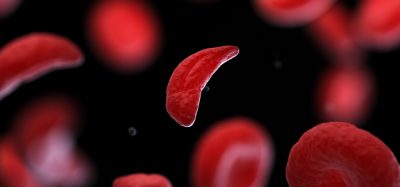Potential target found for CDKL5 deficiency disorder
Posted: 15 December 2023 | Drug Target Review | No comments yet
Using phosphoproteomics, the calcium channel Cav2.3 was found as a target to treat a type of genetic epilepsy, CDKL5 deficiency disorder.


A potential target for a genetic type of epilepsy has been discovered by scientists at the Francis Crick Institute, University College London (UCL) and MSD.
Developmental and epileptic encephalopathies are rare types of epilepsy which begin in early childhood. CDKL5 deficiency disorder is one of the most common types of genetic epilepsy, which causes seizures and impaired development. As there are not yet any disease-targeting medications for this disorder, sufferers are currently treated with generic antiepileptic drugs.
CDD involves losing the function of a gene producing the CDKL5 enzyme, which phosphorylates proteins, meaning it adds an extra phosphate molecule to alter their function. Until now, researchers were not certain how genetic mutations in CDKL5 cause CDD.
The researchers studied mice which lacked the CDKL5 gene, and used a technique called phosphoproteomics to scan for proteins which are a target for the CDKL5 enzyme. They found a target: the calcium channel Cav2.3. Cav2.3 enables calcium to enter nerve cells, exciting the cell and allowing it to pass on electrical signals, which is required for the nervous system to function properly. However, too much calcium coming into cells can result in overexcitability and seizures.
Then, the team recorded what happened to the calcium channels when they were not being phosphorylated by CDKL5. The channels could open, but took much longer to close, leading to larger and more prolonged currents flowing through them. This indicated that CDKL5 is needed to limit calcium entry into cells.
Also, in nerve cells derived from stem cells taken from people with CDD, phosphorylation of Cav2.3 was reduced, suggesting that Cav2.3 function is potentially altered in humans as well as mice.
Severe early onset epilepsy in a related condition called DEE69, which shares many symptoms with CDD, is caused by mutations in Cav2.3 that enhance channel activity. These results suggest that Cav2.3 overactivity is a common feature of both disorders, and that inhibiting Cav2.3 could help with symptoms like seizures.
Dr Sila Ultanir, Senior Group Leader of the Kinases and Brain Development Laboratory at the Crick, said: “At the moment, there’s a clear need for drugs which specifically target the biological nature of CDD. We’ve made a molecular link between CDKL5 and Cav2.3, mutations in which produce similar disorders. Inhibiting Cav2.3 could be a route for trials of future targeted treatments.”
First author Dr Marisol Sampedro-Castañeda, postdoctoral researcher at the Crick, commented: “Our research highlights for the first time a CDKL5 target with a link to neuronal excitability. There’s scattered evidence that this calcium channel could be involved in other types of epilepsy too, so we believe that Cav2.3 inhibitors could eventually be tested more widely.”
Now, the scientists are working with Lario Therapeutics, a new biotech company seeking to develop first-in-class CaV2.3 inhibitors as precision medicines to treat CDD and related neurodevelopmental syndromes.
This study was published in Nature Communications.
Related topics
Genetic Analysis, Ion Channels, Precision Medicine
Related conditions
CDKL5 deficiency disorder (CDD)
Related organisations
Francis Crick Institute, Lario Therapeutics, MSD, University College London (UCL)







